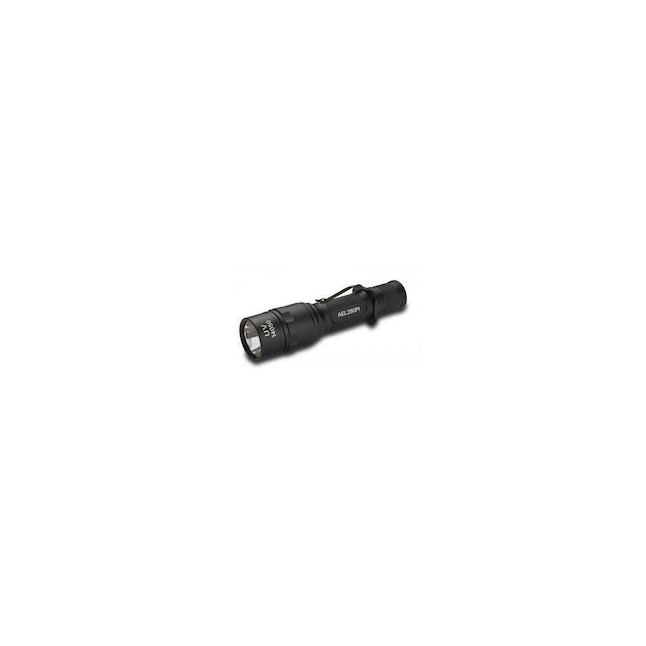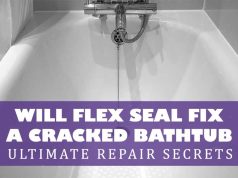
Protect bathroom floors from urine by using washable rugs and sealing grout lines. Regular cleaning with enzymatic cleaners also prevents urine damage and odors.
Ensuring your bathroom floor remains pristine can be a challenge, especially in a busy household or a home with young children and pets. Urine can not only cause unpleasant odors but also harm flooring materials. To combat these issues, many opt for practical solutions like water-resistant mats or specially-designed washable rugs that provide a barrier against spills and splashes.
Sealing grout between tiles is another effective measure to ward off urine stains and make cleanup easier. These precautions, combined with the use of potent enzymatic cleaners that break down urine at a molecular level, can maintain floor hygiene and extend the life of your bathroom flooring. Consistent maintenance is key to keeping bathroom floors looking fresh and free from the damaging effects of urine accidents.
The Bathroom Battleground
Bathrooms face daily challenges, from steam to spills. But, one persistent issue stands out: protecting the floor from urine. It’s not just a call for cleanliness. It’s about shielding surfaces from damage.
Urine Damage And Common Concerns
Urine can harm flooring materials due to its acidic nature. Common concerns involve:
- Odor build-up: Unpleasant smells linger, creating a need for constant freshening.
- Stain formation: Dark spots can appear, and once set, they are tough to remove.
- Material erosion: Over time, urine can break down seals and finishes.
Limiting Factors In Bathroom Floor Protection
Several factors limit how we protect bathroom floors:
| Factor | Explanation |
|---|---|
| Ventilation | Poor air flow can trap moisture and odors. |
| Flooring Material | Some materials absorb urine, while others resist it. |
| Cleaning Habits | Irregular cleaning allows for urine to cause more damage. |

Credit: www.lowes.com
Selecting The Right Flooring Material
Keeping bathroom floors clean is a must. Water isn’t the only thing floors face. Urine can also harm floors. Choosing the right material for your bathroom floor is key.
Some materials resist urine damage better than others. Think about these options when picking new bathroom flooring.
Tile: Durability Meets Style
Tile flooring stands strong against urine. Ceramic and porcelain tiles resist stains and odors. They’re easy to clean too. Urine won’t seep into tile.
- Glazed tile offers extra protection with its shiny coating
- Tile comes in many shapes and colors for style
- Professional sealing helps defend against grout stains
Vinyl: Resilience Against Moisture
Vinyl is a warrior against moisture. It’s non-porous, stopping urine in its tracks. Luxury vinyl tile (LVT) mimics the look of hardwood while keeping floors safe.
Vinyl flooring benefits:
| Quality | Benefit |
|---|---|
| Non-porous | Blocks urine from absorbing |
| Durable | Long-lasting even with heavy traffic |
| Easy to clean | Just needs a quick wipe or mop |
Protective Qualities Of Engineered Wood
Love wood floors? Choose engineered wood for better protection. It resists moisture more than solid hardwood. Its top layer handles spills like a pro.
Why engineered wood:
- Top layer can be refinished if needed
- Ply layers underneath prevent warping
- Better withstanding of bathroom conditions
“`
In this example, key points about selecting the right flooring material to defend against urine damage in bathrooms are outlined. There is a brief introduction, followed by advantages of tile, vinyl, and engineered wood as bathroom floorings. The information about each material is conveyed through a mix of paragraphs, bullet points, and a table to keep it organized and easy to understand.
Strategic Toilet Placement And Design
Proper toilet placement and design are key for bathroom hygiene. When a toilet is strategically placed, the risk of urine spillage on the floor decreases. The design of the toilet itself can also direct flow and prevent mishaps. Let’s explore how specific features and placements can safeguard your bathroom floor.
Toilet Mats: Combining Comfort With Protection
Toilet mats are essential for bathroom floors. They absorb spills and protect surfaces. Comfort meets durability with the right mat. Choose mats that are:
- Water-resistant: They repel urine and water.
- Easy to clean: Machine-washable options save time.
- Non-slip: Safety comes first with a strong grip on the floor.
A quality mat around the toilet base keeps floors dry and clean.
Sealing Gaps And Crevices To Prevent Leaks
Sealing gaps and crevices is crucial to prevent urine leaks. Here is how you can do it:
| Area | Action | Benefit |
|---|---|---|
| Base of Toilet | Use silicone caulk | Stops leaks at the source |
| Floor Tiles | Apply grout sealer | Keeps floors impermeable |
| Floor Edges | Ensure tight seals | Prevents side leaks |
Tight seals keep urine out and make cleaning easier. This task will safeguard your bathroom against unwanted odors and moisture damage.

Credit: www.nytimes.com
Effective Cleaning Agents And Techniques
Effective Cleaning Agents and Techniques play a pivotal role in maintaining a spotless bathroom floor. Urine stains and odors can compromise both the hygiene and aesthetic appeal of your bathroom space. Discovering the right balance between natural remedies and commercial cleaners, alongside adopting a regular cleaning routine, will ensure your bathroom remains pristine and sanitary.
Natural Solutions Versus Chemical Cleaners
When it comes to tackling urine stains and smells, you have two primary choices: natural solutions and chemical cleaners.
| Natural Solutions | Chemical Cleaners |
|---|---|
|
|
Regular Cleaning Schedules For Hygiene And Preservation
A regular cleaning schedule is essential for keeping your bathroom sanitary and flooring in top condition.
- Daily wiping of floor surfaces
- Weekly mopping with chosen solutions
- Immediate clean-up after accidents
- Monthly deep cleans for tough stains
Maintain logs if required, ensuring every family member participates. Remind each other to stay vigilant about spills. Cleaner floors contribute to a healthier home environment.
Innovative Accessories As Preventative Measures
Bathroom floors can suffer from unwanted accidents. Innovative accessories offer smart ways to keep your space clean and odor-free. Let’s explore solutions that prevent urine from causing damage.
Splash Guards: Keeping Urine In Its Place
Dealing with urine spillage is no fun. Splash guards act as barriers. They keep urine where it should be – in the toilet. Here’s how they help:
- Easy to install: Fit them on toilets quickly.
- Practical: They come in various sizes for any toilet type.
- Cost-effective: A small investment saves costly repairs later.
Urine Deflectors: A Simple Yet Effective Tool
Urine deflectors are a simple solution to a common problem. These attach to the toilet bowl, guiding urine downwards. They are:
- Adaptable: They fit most toilet models.
- Hygienic: Made from easy-to-clean materials.
- Durable: Built to last and withstand frequent use.
Educating Household Members
Protecting your bathroom floor from urine spills starts with team effort. Key to this initiative is educating household members on the importance of good bathroom habits. It’s all about fostering respect and cleanliness for a shared space. Let’s explore how to establish a culture of care and responsibility in the bathroom.
The Role Of Bathroom Etiquette
Bathroom etiquette plays a pivotal role in maintaining a sanitary space. Begin by explaining why cleanliness matters. Outline simple steps like lifting the seat or cleaning up after use. This avoids urine stains and keeps the floor spotless. Place friendly reminder signs around the bathroom as positive reinforcement for these habits.
Implementing Rules For Kids And Guests
When kids are part of your home, teach them early about proper bathroom use. Use fun charts and games to make the learning process enjoyable. For guests, a clean bathroom sets expectations. Ensure you communicate any important rules, so they know how to help keep your space clean.
Achieving a urine-free floor is about consistency and cooperation. Equip your bathroom with the right tools and offer gentle but clear guidance for everyone’s benefit. A shared commitment to this goal ensures a cleaner, healthier environment for all.

Credit: issuu.com
Frequently Asked Questions For How To Protect Bathroom Floor From Urine
What Causes Urine Damage To Bathroom Floors?
Urine can damage bathroom floors due to its acidic nature, which can etch and stain certain materials. Prolonged exposure may cause discoloration, odor, and in some cases, structural weakening.
How To Prevent Urine From Harming Floors?
Preventing urine damage involves regular cleaning, using protective mats or sealants, and encouraging good bathroom habits. Maintenance and immediate response to accidents are key to protection.
Best Cleaning Products For Urine On Floors?
Choose pH-neutral or enzyme-based cleaners for urine on floors. These products are effective in neutralizing odors and breaking down urine residue without damaging most floor types.
Are There Urine-proof Floor Materials?
While no floor material is wholly urine-proof, tiles and sealed stones offer better resistance against urine damage. Avoid porous materials like unsealed wood and certain types of linoleum.
Conclusion
Safeguarding your bathroom floor from urine is essential for hygiene and longevity. Implement these strategies to maintain cleanliness and preserve your flooring investment. Embrace routine maintenance, employ protective sealants, and consider urine deflectors for lasting results. With proper care, your bathroom can remain spotless and odor-free.




















